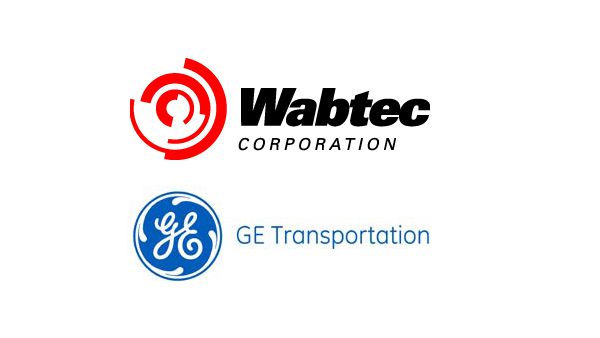
Wabtec(WAB) was excited to announce this that it had completed its merger with GE Transportation, immediately following GE Transportation’s spinoff from GE(GE). GE shareholders will see small amounts of Wabtec in their portfolios. The final ratio is a bit lower than what had been estimated. For each share of GE stock owned, shareholders received 0.005371 shares of Wabtec stock, approximately one share of Wabtec stock for every 186 shares of GE stock. Many small shareholders will receive cash in lieu of shares. Shareholders should be aware that this spinoff is taxable. People should ask their tax advisor what this means, but our understanding is that the full amount of the distribution is taxable, but it also reduces the basis on their GE shares by the value received. As mentioned previously, Wabtec has joined the S&P 500.
With the completion of the transaction, GE received $2.9 billion in cash and retains a 24.9% ownership interest in Wabtec. GE CEO Larry Culp commented
Today’s update is another important landmark in executing GE’s portfolio strategy. This transaction is good for GE shareholders, who gain equity in an organization at the forefront of rail innovation; for GE, as we work to reduce leverage and strengthen our balance sheet; and for Wabtec, which now has a stronger and more diversified business mix to serve its customers. The GE and Wabtec teams worked hard to complete this deal, and I am excited by the opportunities ahead for Wabtec.
Raymond Betler, CEO of Wabtec, was similarly optimistic
We are very excited to complete the merger of our two companies. This is a once-in-a-lifetime opportunity to bring together nearly four centuries of collective experience to create a technologically advanced leader with a highly complementary set of capabilities to move and improve the world. Our teams have made significant progress in integration planning, and this process has only strengthened our confidence in the value creation potential of the combination. Today, we are a stronger, more diversified company ready to better serve customers across the globe and capitalize on new growth opportunities at an attractive point in the cycle.
Labor challenges that we discussed earlier persist at the company’s Erie plant. There, the the United Electrical, Radio and Machine Workers of America voted on Saturday to authorize a strike.
Going forward, Wabtec will have to work through a labor dispute at a manufacturing and design facility in Erie, where more than 1,700 former GE Transportation workers are threatening to strike after negotiations for a new labor contract with Wabtec broke down.
Wabtec has proposed a two-tier system that would maintain wages and benefits for all current employees, who earn a starting wage of $35 an hour, but pay a lower wage to new hires.
The proposal also would impose mandatory overtime, according to statements from the United Electrical, Radio and Machine Workers of America.
On Saturday, the UE membership voted to allow union leaders to call a strike — a negotiating tactic that raises the stakes. The union released a statement after the strike authorization that asked the question: “Can Wabtec Hit Its Post-Merger Targets If It Isn’t Making Locomotives?”
“We are eager to work with Wabtec to ensure that this plant remains highly profitable,” said Scott Slawson, president of UE Local 506.
“But if Wabtec insists on imposing mandatory overtime, a lower wage scale for new hires, and bringing in temporary workers, they will be destroying a proven effective and profitable model that made General Electric the most successful locomotive builder in the world.”
Bargaining continues, and a mediator from the Federal Mediation and Conciliation Service has joined the negotiations, according to the union.
Wabtec, in a statement last week, said the Erie plant is “GE Transportation’s least competitive site and it has been for years.” The company said its proposals are in line with work conditions negotiated with UE-represented workers at its manufacturing facility in Wilmerding.
Mr. Betler, asked by an analyst about the labor dispute on Monday, said he is eager to resolve it.
“Our view is very simple: We want to integrate that workforce into our organization,” Mr. Betler said. He acknowledged the two-tier wage structure is the “biggest sensitivity” but that “allows us to be competitive internationally (without affecting) wages for any of the legacy employees.”
“We’re working through that with the union and we believe we’ll be able to settle that agreement hopefully in the near-term,” he said.
Hopefully, the labor dispute can be resolved quickly and Wabtec and can work towards meeting the goals it has set out and delivering great returns for all stakeholders.
Disclosure: The author holds shares of GE and maybe a few of Wabtec
Your stated that “our understanding is that the full amount of the distribution is taxable, but it also reduces the basis on their GE shares by the value received.” In a taxable spinoff, there is normally no change in the basis of the parent stock. The parent stock basis only changes if a portion of the taxable spinoff market value exceeds accumulated earnings and profits and is then reported to the shareholder as a return of capital. The Form 8937 will disclose any return of capital percentage but it has not yet been published by GE as of 2/28/2019. The Form 1099 at year-end will show the final tax value of the spinoff.
Does anyone have an answer to this? My broker has already changed my basis, but I believe that is incorrect if this is a taxable spin-off.
Some brokers will use an estimated FMV to compute cost allocation before details from the Form 8937 are available. Some will change it to the finalized FMV on Form 8937, some will keep the estimated as the final cost. They are usually available anywhere from immediately after to 6 weeks after the transaction. I have been checking daily and have not seen the Form 8937 covering this transaction published yet.